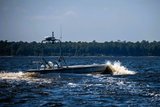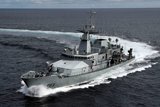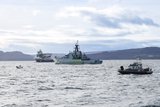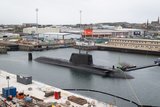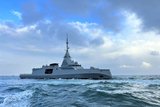Cambridge Pixel delivers software to Maris
Cambridge Pixel has supplied its RadarWatch coastal surveillance software and advanced target trackers to Maritime Information Systems (Maris) as part of an upgrade to safety systems at UK military firing ranges.
The upgrade has delivered an enhanced situational display at the first of the firing ranges on England’s south coast.
Cambridge Pixel's RadarWatch display application and tracking software has helped improve safety at the firing range by providing an integrated radar video and AIS ship transponder track display, as well as advanced alarm capability for targets entering user-defined danger zones.
Nic Baldwin, technical manager, Maris, said: ‘Cambridge Pixel's new RadarWatch display software and its range of flexible software modules has allowed us to design and build a complete system upgrade for our customer using commercial sensors.
‘Cambridge Pixel's software has provided us with a cost-effective way of upgrading a legacy system to utilise more modern technologies, such as the solid-state Halo 6 pulse compression radars from Simrad. We have also added an AIS transponder into the surveillance system and the RadarWatch software is able to fuse the AIS tracks and present the data as a graphical overlay on top of the radar video and map layers. This fused display enables faster, clearer and better-informed decisions for the operator.’
RadarWatch is designed for coastal surveillance, small port and harbour security applications and features comprehensive alarm logic allowing alarms to be configured based on areas, target activity or target behaviour. This alarm logic includes the ability to compare all current targets to user-defined regions and to identify targets impinging on them. Exceptions may be made within a ‘safe list’, allowing identified targets to enter alarm zones without raising an alert.
More from Naval Warfare
-
![How the UK Royal Navy is powering up its hybrid fleet to combat new threats]()
How the UK Royal Navy is powering up its hybrid fleet to combat new threats
Since it announced its move towards a new “hybrid navy” earlier this year, the force has announced a number of new uncrewed technologies in the works.
-
![US and UK to begin Trident II D5 Increment 8 in October 2026]()
US and UK to begin Trident II D5 Increment 8 in October 2026
Trident II D5 Increment 8 will involve improvements to the shipboard navigation subsystem for the US Ohio and Columbia and the UK Dreadnought and Vanguard submarine classes.
-
![What capabilities has the US deployed in the Caribbean and South America to engage “drug boats”?]()
What capabilities has the US deployed in the Caribbean and South America to engage “drug boats”?
The US arsenal includes amphibious assault and littoral combat ships, cutters, destroyers, landing platform docks, a nuclear-powered fast attack submarine, drones, ISR aircraft, helicopters and fighters.
-
![HMS Agamemnon: details of the dive and what the Astute-class signifies for the UK Royal Navy]()
HMS Agamemnon: details of the dive and what the Astute-class signifies for the UK Royal Navy
As HMS Agamemnon moves closer towards joining the UK’s in-service submarine fleet, how does the sixth Astute-class fit into the Royal Navy’s defence strategy?
-
![French Navy frigates to align with Hellenic Navy after Aster missile enhancement]()
French Navy frigates to align with Hellenic Navy after Aster missile enhancement
The FDI frigates will have an enhanced warfare capability that matches the configuration of ships ordered by Greece.







